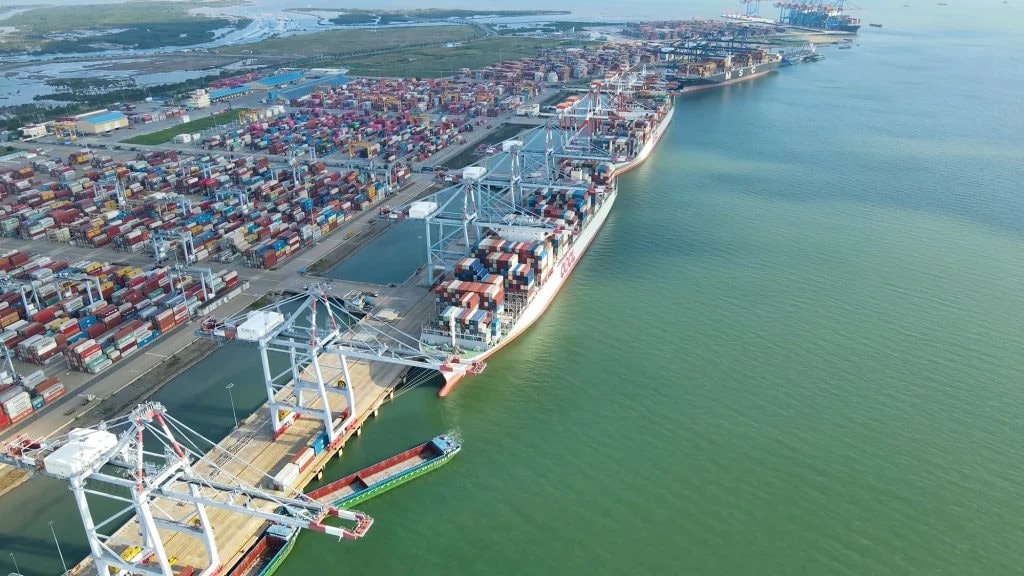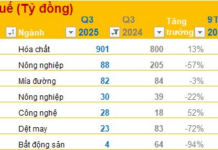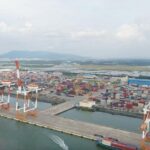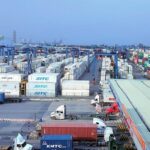Vietnam’s maritime industry has witnessed a significant surge in cargo traffic through its ports, as indicated by the recent rankings released by the Vietnam Maritime Administration and Lloyd’s List, a renowned UK-based maritime news publication.
Three of Vietnam’s ports have made it to the prestigious Lloyd’s List top 100 container ports for 2025: Ho Chi Minh City Port, Hai Phong Port, and Cai Mep Port. These ports are also the largest in the country. Lloyd’s List’s rankings are based on container throughput, and Vietnam’s ports have shown impressive growth in this regard.
Ho Chi Minh City Port climbed three places to 22nd position with a throughput of over 9.1 million TEU in 2024, reflecting a remarkable 23.8% increase compared to 2023. Hai Phong Port, ranked 29th, handled approximately 7.1 million TEU in 2024, a 12.8% surge year-on-year, moving up four places from the previous year.
Likewise, Cai Mep Port rose four spots to 30th position, handling over 7 million TEU, a substantial 29.2% increase compared to 2023. This impressive performance is attributed to the diversion of trade flows due to US-China trade tensions, prompting investors and shipping lines to diversify their supply chains in Southeast Asia.
The report also highlights the significant growth of emerging markets like Vietnam, India, and Turkey, which have capitalized on supply chain restructuring and regional trade agreements. The total container throughput across the top 100 ports reached 743.6 million TEU, an 8.1% increase year-on-year.
Prior to the Lloyd’s List rankings, DynaLiners Millionaires had also recognized these three Vietnamese ports among the top 50 container ports globally in 2024, solidifying Vietnam’s position as a major player in the maritime industry.
Vietnam’s Top Three Ports: A Snapshot
Cai Mep Port: A modern and efficient gateway. Source: TL
Ho Chi Minh City Port, Hai Phong Port, and Cai Mep Port are Vietnam’s largest and most important ports, classified as special-class ports. Hai Phong and Cai Mep are designated as international transshipment hubs, capable of accommodating large container vessels, thereby reducing logistics costs.
Hai Phong Port, the second-largest port complex in Vietnam, serves as an international gateway and is currently expanding with the development of the Lạch Huyện Port, solidifying its strategic position.
Cai Mep Port, previously ranked 7th globally by the World Bank and S&P Global Market Intelligence for port performance, has consistently proven its efficiency and global competitiveness, outranking renowned international transshipment hubs.
Vietnam’s ports are vital contributors to the country’s GDP, facilitating international trade, attracting investments, creating jobs, supporting related industries, and connecting Vietnam to global supply chains.
The Green Port Transition: Sailing Towards Sustainability
Vietnam is lagging behind in the green transition, and there’s a lot of ground to cover. The issue at hand is the need to accelerate this process; otherwise, the country risks missing out on development opportunities and even falling behind as no “green ship” wants to dock at a “non-green port.”
The Maritime Administration: 8,000 Stranded Containers Impede the Efficiency of Vietnam’s Seaports
The latest news from the Vietnam Maritime Administration (under the Ministry of Transport) reveals an excess of over 7,650 containers that have been lingering at Vietnamese port areas for more than 90 days. This backlog is predominantly centered around major ports in key cities: Ho Chi Minh City, Hai Phong, Danang, and Vung Tau.













































